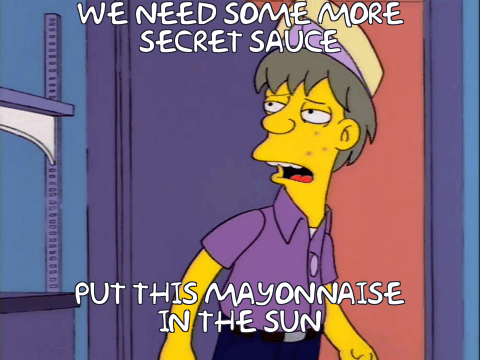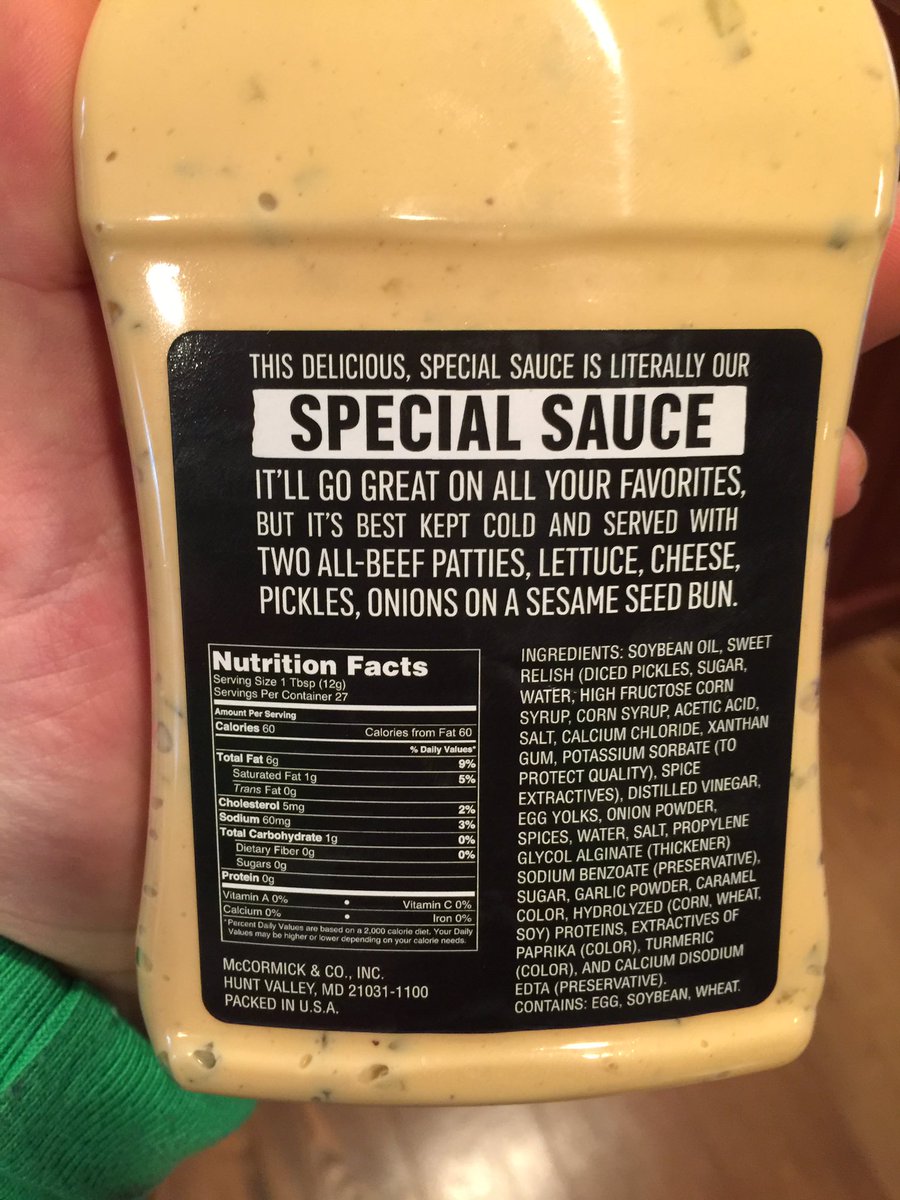The Big Mac sauce has been a closely guarded secret recipe for many years. At least, that's what many on the internet will have you believe. And if you are to believe those same people, then cloning Big Mac Sauce is as simple as combining Mayonnaise (or Miracle Whip!) with ketchup, pickle relish, and a few other flavorings, making the sauce essentially a Thousand Island-type spread.
Problem is, even a cursory bit of research on the Mcdonald's website reveals that the sauce is actually nothing of the sort. Rather, it is a mayonnaise-based sauce with no ketchup or tomato to speak of consisting of:
Soybean oil, pickle relish [diced pickles, high fructose corn syrup, sugar, vinegar, corn syrup, salt, calcium chloride, xanthan gum, potassium sorbate (preservative), spice extractives, polysorbate 80], distilled vinegar, water, egg yolks, high fructose corn syrup, onion powder, mustard seed, salt, spices, propylene glycol alginate, sodium benzoate (preservative), mustard bran, sugar, garlic powder, vegetable protein (hydrolyzed corn, soy and wheat), caramel color, extractives of paprika, soy lecithin, turmeric (color), calcium disodium EDTA (protect flavor).
It's a frightening-looking list, but it's not really as bad as it seems. Calcium chloride is used to keep pickles crunchy (you'll find it in your canned tomatoes), xanthan gum and propylene glycol alginate are both thickeners derived from corn and kelp, respectively. Potassium sorbate and sodium benzoate are preservatives (we'll do without them), while disodium EDTA prevents metallic ions from reacting and affecting flavor during long-term storage (we also won't be needing that).
Essentially, it's a mix of mayonnaise, relish, and mustard
When you look at what's left, you've basically got soybean oil, pickle relish, vinegar, egg yolks, sugars (including HFCS), onion, mustard, vegetable protein, colorings, and emulsifiers. Essentially, it's a mix of mayonnaise, relish, and mustard with sugar, onion, turmeric colorings, and a bit of hydrolyzed vegetable protein thrown in. It's this last bit that might throw you for a bit of a loop.
Hydrolyzed vegetable protein is made by breaking down proteins into their constituent amino acids, resulting in a product with a distinctly savory flavor. Indeed, it's very similar to bottled yeast extracts (which are made by autolyzing yeast) such as Marmite, Vegemite, or Maggi seasoning. Any of those will do.
For the onions, rather than using powdered or dehydrated onions, I found that I got better flavor out of simply grating fresh onion on a Microplane grater. Combining this with the remaining elements and fiddling with the ratios got me a sauce that taste-wise was almost identical to the Mac sauce, though it lacked the characteristic pinkish hue, no doubt from the caramel color. No worriesI could live with yellowish sauce.



